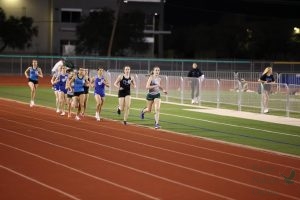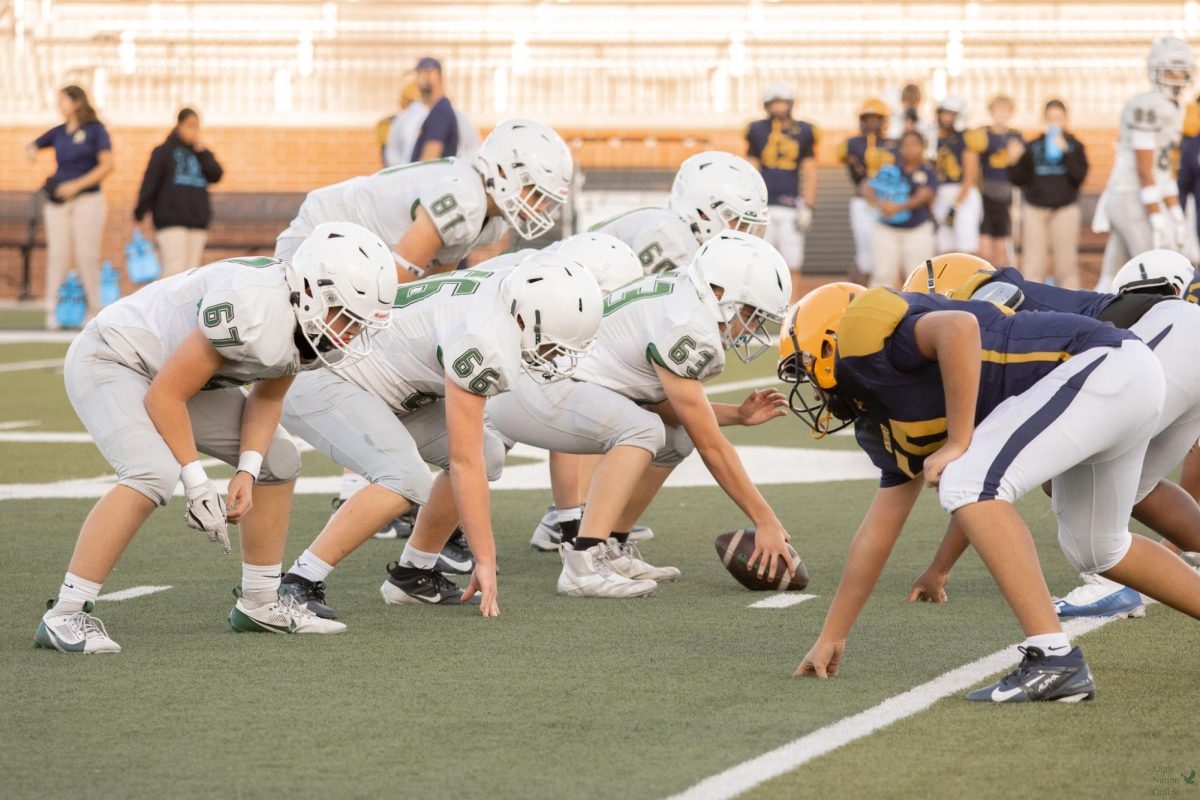Safety practices require Eagle Time changes
Due to not having a specific location to go, a sea of students fill the cafeteria during Eagle Time prior to the new policies governing this period. Photojournalist Emily Reish snapped this shot on Sept. 26. “We started figuring out and thinking ‘what can we do better?’” principal John Burdett said. “Every second is precious, and we can’t waste seconds.”
October 22, 2019
Students are now acclimating to new rules implemented at the high school regulating Eagle Time, which started Oct. 7. Students no longer self-govern where they go during their 38-minute-activity/study hall period.
“We started figuring out and thinking ‘what can we do better?’” Principal John Burdett said. “Every second is precious, and we can’t waste seconds.”
Eagle Time is a period available for tutoring, meetings, and studying between the third and fourth periods on A days, and the seventh and eighth periods on B days, where students are allowed to leave their current classroom and move to a desired room. However, due to safety protocol changes, the choices for Eagle Time will be restricted.
“The changes that we’re gonna do – the reason we’re doing this – is because of (the) safety of our students,” Burdett said. “We’re trying to help you within our time here.”
These changes are being made after a lockout on Sept. 12 showed how students would possibly be exposed during a dangerous situation. During a lockout, students that are outside are required to be moved inside until the campus is secure.
“Our first step was trying to secure the back porch, where there are usually around 200-plus students there during Eagle Time,” Assistant Principal John Boehringer said.
The topic came up with administrators after all of the students were safely escorted into the building. Considering that during any given Eagle Time, there were often upwards of more than 1,000 students in the cafeteria. The added 200 hundred or more caused the staff to realize the safety risks of so many people being in one area.
“And, we got all the students in the cafeteria, and it hit us,” Burdett said. “If this was ever a lockdown, this would not go well. The safety of our students would be in jeopardy.”
When a lockdown is called, the procedure includes getting all students inside a classroom, behind a locked door, and out of sight of any windows. The cafeteria is a large room, completely surrounded by windows. In the case of a lockdown, it would not be the preferred location for such a large group of people. The new drafting system, which is currently in effect at two middle schools, should alleviate the issue. According to Burdett, Rogers Middle School and Hays do a draft system. The drafting system works as a large spreadsheet, with the names of every teacher and student in the building as the information.
“We draft 15 young adults to come in for either remediation (or) extension because tutoring is not just about struggling,” Burdett said. “We’re maximizing our learning.”
The drafting location during Eagle Time is mandatory, and students who ignore where they’ve been drafted will be addressed.
“The teachers will have a list of students who are supposed to be in their class. If they (students) don’t show up, the (teachers) paint their (student) field red,” Burdett said. “We get that up in the administrator’s office, and then we start calling in everybody who missed.”
The location of where students need to go are announced the period before Eagle Time, and students are then expected to go to that location immediately after the Eagle Time bell rings.
“If you miss, we’ll be flexible,” Burdett said. “But, if you chose not to go, we’ll give you a Friday Night Reflection or Saturday school.”
If a student is absent or if a student is not aware of their room placement, clarifications will be made, but Eagle Time assignments are not optional. Some students often see it as free time or a social hour, but Eagle Time is really a chance to catch up on work or study.
“We want to close any gaps in learning that we have,” Burdett said. “We have 190 minutes per week for Eagle Time, which saves you 190 minutes at home of studying.”
The majority of students, according to statistics from Oxford Learning, say they believe that homework is one of the main sources of stress for students. The changes during Eagle Time are meant to alleviate the stress on students, and when students are put in a place of specific and targeted learning, they are able to focus better on certain aspects. The time in Eagle Time is ultimately meant to allow students to be able to maximize the learning time when they’re in schools, to lessen the amount of time during school that students are spending on school work.
“It’s meant to be an academic benefit for every student in the building,” Burdett said. “So that when you go home, you can be a kid.”
Updated Oct. 24 for style issues. Updated Oct. 26 to add links.





















